Computational Fluid Dynamics
Copyright
Preface to the First Edition
Preface to the Second Edition
Acknowledgments
Introduction
What is computational fluid dynamics?
Advantages of computational fluid dynamics
Application of computational fluid dynamics
As a Research Tool
As an Educational Tool in Basic Thermal-Fluid Science
As a Design Tool
Aerospace
Automotive Engineering
Biomedical Science and Engineering
Chemical and Mineral Processing
Civil and Environmental Engineering
Metallurgy
Nuclear Safety
Power Generation
Sports
The future of computational fluid dynamics
Summary
Review questions
CFD Solution Procedure-A Beginning
Introduction
Shareware CFD
Commercial CFD
Problem setup-pre-process
Creation of Geometry-Step 1
Mesh Generation-Step 2
Selection of Physics and Fluid Properties-Step 3
Specification of Boundary Conditions-Step 4
Numerical solution-CFD solver
Initialization and Solution Control-Step 5
Monitoring Convergence-Step 6
Result Report and Visualization-Post-process
X-Y Plots
Vector Plots
Contour Plots
Other Plots
Data Report and Output
Animation
Summary
Review questions
Governing Equations for CFD-Fundamentals
Introduction
The continuity equation
Mass Conservation
Physical Interpretation
Comments
The momentum equation
Force Balance
Physical Interpretation
Comments
The energy equation
Energy Conservation
Physical Interpretation
Comments
The additional equations for turbulent flow
What Is Turbulence?
k-ε Two-Equation Turbulence Model
Comments
Generic form of the governing equations for cfd
Physical boundary conditions of the governing equations
Summary
Review questions
CFD Techniques-The Basics
Introduction
Discretization of governing equations
Finite-Difference Method
Finite-Volume Method
Finite-Element Method
Spectral Method
Converting governing equations to algebraic equation system
Finite-Difference Method
Finite-Volume Method
Comparison of the Finite-Difference and Finite-Volume Discretizations
Numerical solutions to algebraic equations
Direct Methods
Iterative Methods
Pressure-velocity coupling-``simple´´ scheme
Multi-grid method
Summary
Review questions
CFD Solution Analysis-Essentials
Introduction
Consistency
Stability
Convergence
What Is Convergence?
Residuals and Convergence Tolerance
Convergence Difficulty and Using Under-Relaxation
Accelerating Convergence
Accuracy
Source of Solution Errors
Discretization Error
Round-Off Error
Iteration or Convergence Error
Physical Modeling Error
Human Error
Controlling the Solution Errors
Verification and Validation
Efficiency
Case studies
Test Case A: Channel Flow
Test Case B: Flow over a 90o Bend
Summary
Review questions
Practical Guidelines for CFD Simulation and Analysis
Introduction
Guidelines on grid generation
Structured Mesh
Body-Fitted Mesh
Unstructured Mesh
Comments on Mesh Topology
Guidelines for Grid Quality and Grid Design
Local Refinement and Solution Adaptation
Guidelines for boundary conditions
Overview of Setting Boundary Conditions
Guidelines for Inlet Boundary Conditions
Guidelines for Outlet Boundary Conditions
Guidelines for Wall Boundary Conditions
Guidelines for Symmetry and Periodic Boundary Conditions
Guidelines for turbulence modeling
Overview of Turbulence-Modeling Approaches
Strategy for Selecting Turbulence Models
Near-Wall Treatments
Setting Boundary Conditions
Test Case: Assessment of Two-Equation Turbulence Modeling for Hydrofoil Flows
Summary
Review questions
Some Applications of CFD with Examples
Introduction
To assist in the design process-as a design tool
Indoor Air-Flow Distribution
To enhance understanding-as a research tool
Gas-Particle Flow in a 90o Bend
Other important applications
Heat Transfer Coupled with Fluid Flow
Heat Exchanger
Conjugate and Radiation Heat Transfer11The materials in this section were provided by David Wassink and Mark Ho, wor
A Buoyant Free-Standing Fire
Flow over Vehicle Platoon
Air/Particle Flow in the Human Nasal Cavity
High-Speed Flows
Supersonic Flow over a Flat Plate
Subsonic and Supersonic Flows over a Wing
Summary
Review questions
Some Advanced Topics in CFD
Introduction
Advances in numerical methods and techniques
Incompressible Flows
Compressible Flows
High-Resolution Schemes
Adaptive Meshing
Moving Grids
Multi-Grid Methods
Parallel Computing
Immersed Boundary Methods
Advances in computational models
Direct Numerical Simulation
Large Eddy Simulation LES
RANS-LES Coupling for Turbulent Flows
Multi-Phase Flows
Combustion
Fluid-Structure Interaction
Physiological Fluid Dynamics
Other numerical approaches for CFD
Lattice Boltzmann Method
Monte-Carlo Method
Particle Methods
Discrete Element Method
Summary
Review questions
Full Derivation of ConservationEquations
Upwind Schemes
Explicit and Implicit Methods
Learning Program
Learning Program for a One-Semester CFD Course
Appendix E:
CFD Assignments and Guideline for CFD Project
Assignment 1
Background and Aim
Problem Description
Instructions
Assignment 2
Background and Aim
Problem Description
Single-Car Configuration
Instructions
Drafting Configuration
Instructions
Assignment 3
Background and Aim
Problem Description
Instructions
Project Guideline
Aim
Objectives
Example-CFD Project proposal prepared by the student
Introduction
Scope
Objectives
Other Topics for CFD Projects
CFD Project A: CFD Simulation of Turbulent Flow over a Backward-Facing Step
Background
Objectives
Problem Description
Required Discussions
CFD Project B: CFD Simulation of Pickup Trucks with Open/Closed Beds
Background
Objectives
Problem Description
Required Discussions
Addendum
CFD Project C: Investigation of Cooling Electronic Components within a Computer
Background
Objectives
Problem Description
Required Discussions
References
Index


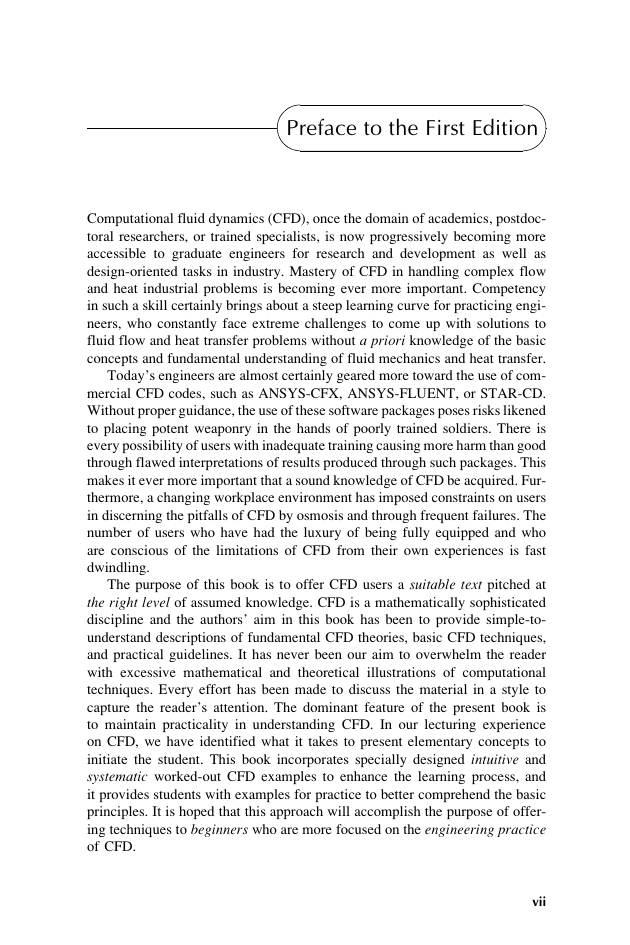
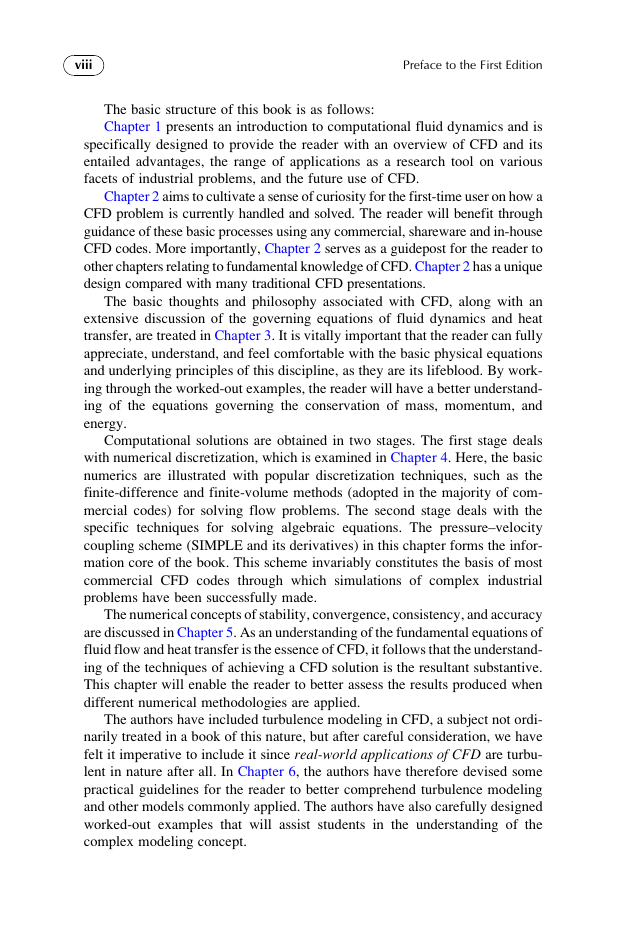
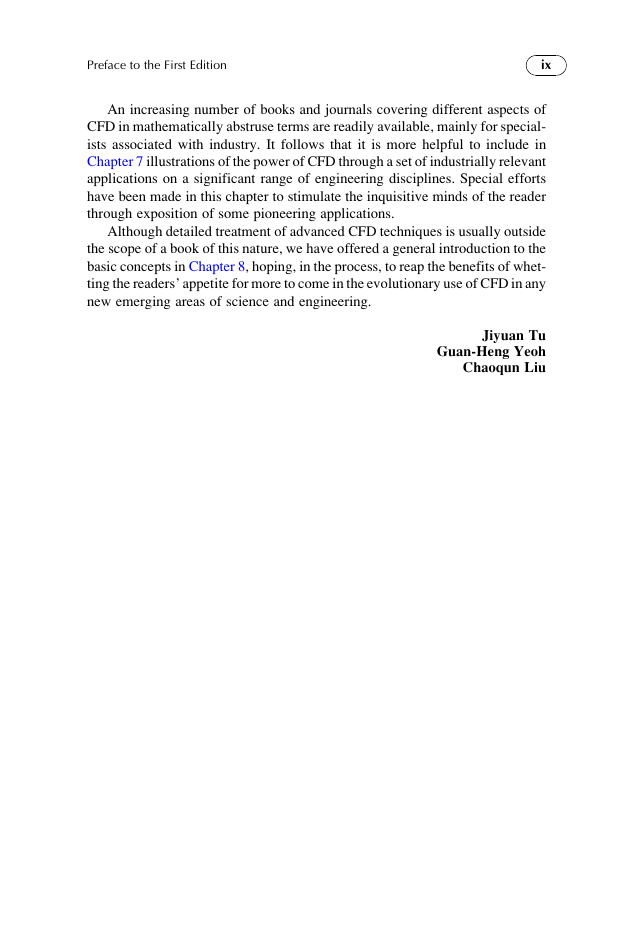

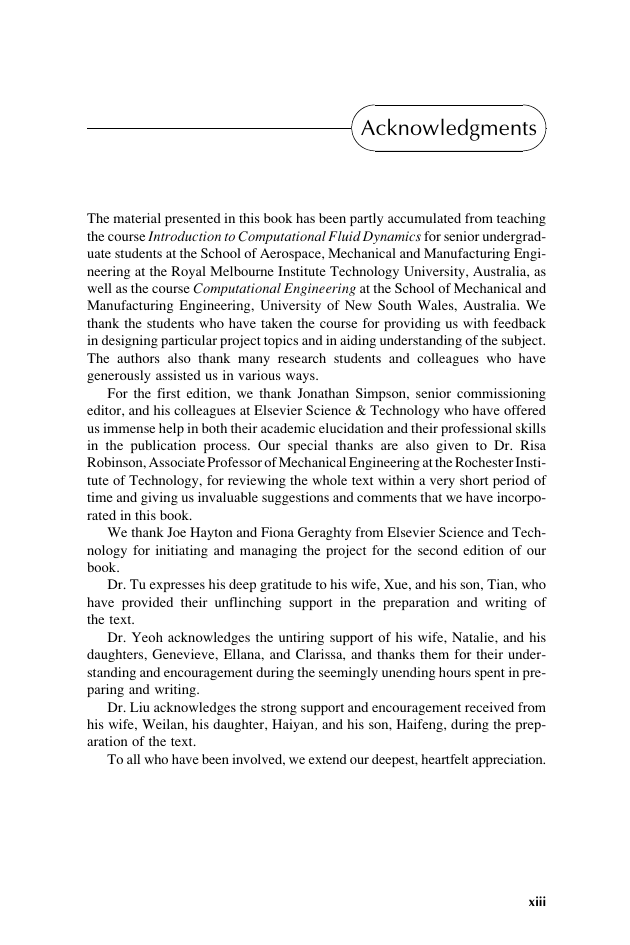
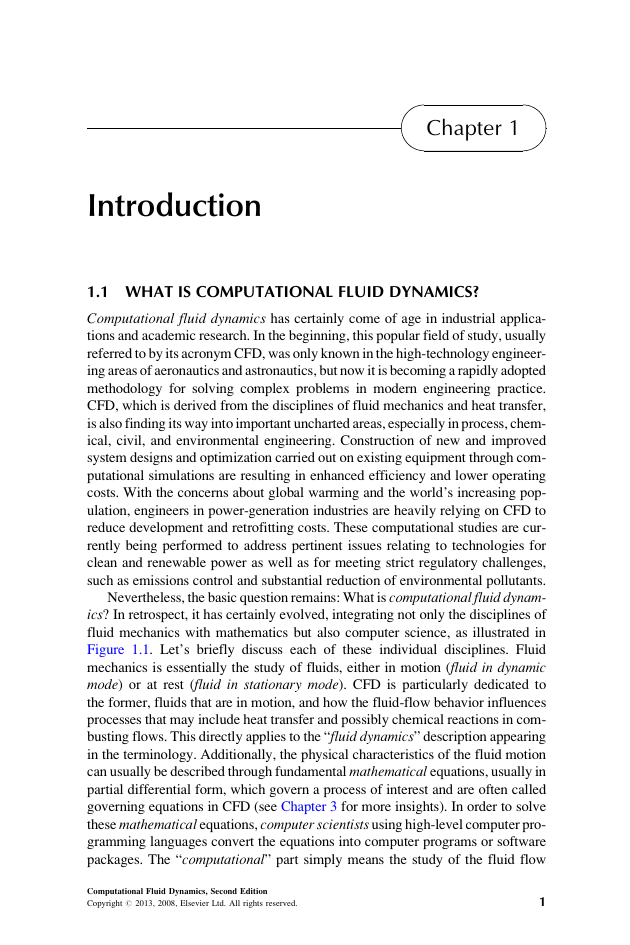








 2023年江西萍乡中考道德与法治真题及答案.doc
2023年江西萍乡中考道德与法治真题及答案.doc 2012年重庆南川中考生物真题及答案.doc
2012年重庆南川中考生物真题及答案.doc 2013年江西师范大学地理学综合及文艺理论基础考研真题.doc
2013年江西师范大学地理学综合及文艺理论基础考研真题.doc 2020年四川甘孜小升初语文真题及答案I卷.doc
2020年四川甘孜小升初语文真题及答案I卷.doc 2020年注册岩土工程师专业基础考试真题及答案.doc
2020年注册岩土工程师专业基础考试真题及答案.doc 2023-2024学年福建省厦门市九年级上学期数学月考试题及答案.doc
2023-2024学年福建省厦门市九年级上学期数学月考试题及答案.doc 2021-2022学年辽宁省沈阳市大东区九年级上学期语文期末试题及答案.doc
2021-2022学年辽宁省沈阳市大东区九年级上学期语文期末试题及答案.doc 2022-2023学年北京东城区初三第一学期物理期末试卷及答案.doc
2022-2023学年北京东城区初三第一学期物理期末试卷及答案.doc 2018上半年江西教师资格初中地理学科知识与教学能力真题及答案.doc
2018上半年江西教师资格初中地理学科知识与教学能力真题及答案.doc 2012年河北国家公务员申论考试真题及答案-省级.doc
2012年河北国家公务员申论考试真题及答案-省级.doc 2020-2021学年江苏省扬州市江都区邵樊片九年级上学期数学第一次质量检测试题及答案.doc
2020-2021学年江苏省扬州市江都区邵樊片九年级上学期数学第一次质量检测试题及答案.doc 2022下半年黑龙江教师资格证中学综合素质真题及答案.doc
2022下半年黑龙江教师资格证中学综合素质真题及答案.doc